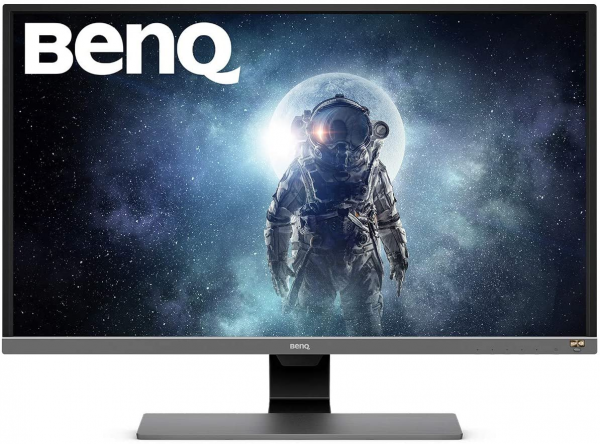BenQ
BenQ EW3270U: a versatile 32 inch VA Ultra HD monitor
Aprox. 674€ - see price -
See specificationsThe BenQ EW3270U is a 32 inch Ultra HD monitor which seems particularly interesting thanks to little extras like FreeSync and HDR10 compatibility, its USB-C port and its ambient light sensor. Here is his test ...
Positive points
Definition Ultra HD comfortable on this diagonal of 32 inches (81 cm).
Native contrast.
FreeSync compatible.
HDR10 compatible.
Ambient light sensor.
Bad points
No height adjustment.
USB-C port limited to 5 W.
Lack of brightness for HDR10 content.
Our review
Presentation
The EW3270U has a 32-inch (≈81 cm) VA panel displaying an Ultra HD definition of 3,840 x 2,160 px. BenQ announces a contrast ratio of 3000: 1, a maximum brightness of 300 cd / m² - which does not seem frankly ideal for HDR - and viewing angles of 178 °. It only has a refresh rate of 60 Hz, but it is FreeSync compatible between 40 and 60 Hz. It is also flicker-free and offers a blue light filter. On the ergonomic side, you have to be content with the minimum with only an inclination adjustment, but it makes up for the connection with its USB-C input, which is always interesting for those who use a compatible laptop; but as we will see, BenQ did not go all the way.
Sold around 450 €, the BenQ EW3270U monitor comes to compete if we can say the Samsung Space Monitor with some weighty arguments like its USB-C connector or HDR10 compatibility.
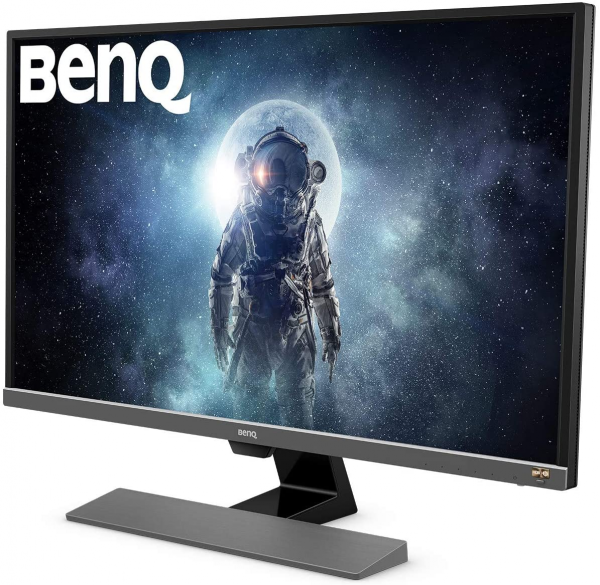
Ergonomics
The design of the BenQ EW3270U is rather classic. The screen edges are quite thick, but the coating is matt and dilutes most of the reflections.
The massive plastic base is designed to accommodate a laptop. It is large enough to accommodate almost all models on the market. Its depth of 21 cm is very correct for a 32 inch monitor, but it is not the least bulky. In comparison, the base of the AOC Q3279VWF is only 15 cm deep.
This monitor is content with a single adjustment, that of the inclination (from -5 ° and + 15 °). It has no rotation or pivot for switching to portrait mode and, more handicapping, there is no height adjustment.
The back is sober and the black plastic of good quality. The connections are oriented towards the ground. We note the presence of threads compatible with the VESA 100 x 100 fixings.
The connection consists of two HDMI 2.0 HDCP 2.2 compatible inputs, a DisplayPort input, a USB-C input compatible DisplayPort Alternate Mode and a headphone output. It also has two 2W speakers that - if not replacing a PC speaker kit - can troubleshoot to watch a short video or news. The major problem here is the absence of the Power Delivery function on the USB-C connector, which prevents a laptop from being charged. In fact, the USB-C port only delivers a power of 5 W. It will therefore take a long time to charge a laptop. A charge is therefore finally possible, but it can require an entire night. The screen therefore does not act as a docking station and it will always use the power of the laptop, otherwise it will run on its internal battery.
Five buttons located at the base of the panel allow you to access the various settings and change the source. The sixth button is dedicated to turning on the monitor. If the menus are clear, the navigation is laborious and it is not uncommon to get the wrong button. Many settings are available (color temperature, brightness, contrast, overdrive, etc.).
The BenQ EW3270U has a brightness sensor called Brightness Intelligence Plus (BI +) which adjusts the brightness and the color temperature according to the ambient lighting. The technology is convincing and makes it possible to adapt the image quality judiciously according to the ambient light.
This screen occupies a good part of our standard desk 140 cm wide and 60 cm deep, but the foot depth limited to 21 cm allows to keep enough space on the desk. The latest versions of operating systems like Windows 10 or macOS 10.4 handle Ultra HD definition perfectly and allow 150% efficient scaling. The text elements are large enough to be readable and the image is perfectly clear. We can also consider using the native definition of 3 840 x 2 160 px, or 138 pixels per inch (ppi), as long as we get closer to the screen. Note that photo editing software like Photoshop perfectly manages this scaling in the interface, but display photos using the native definition of the panel, which allows you to benefit from a very high level of detail and appreciable for photo editing enthusiasts.
By lowering the brightness to 39 to obtain a white at 150 cd / m², the BenQ EW3270U consumes 29 W, or a relative consumption of only 103 W / m². With its high resolution, this monitor consumes a little more than the average of the other models tested (100 W / m²). It consumes a minimum of 17 W of brightness (35 cd / m²) and a maximum of 45 W (274 cd / m²). This fairly limited maximum brightness clearly handicaps the monitor in reproducing HDR images.
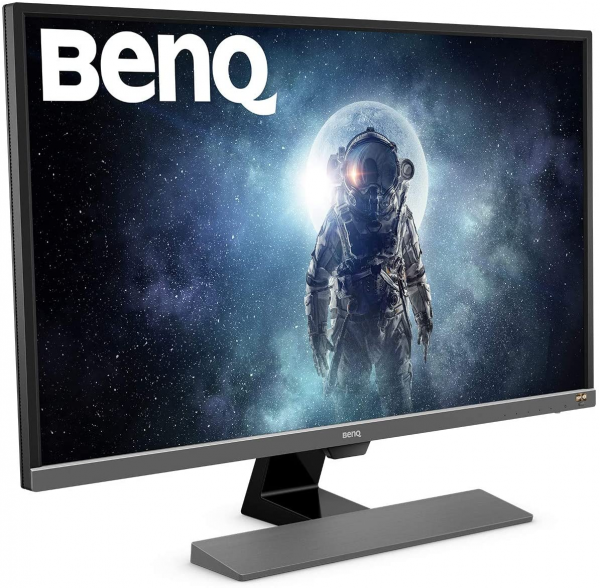
Colors and contrast
By default, the BenQ EW3270U displays good image quality. We have thus noted an average gamma of 2.2 which, despite the slightly unstable curve, locks onto the reference value and a Delta E of only 2.9, below the threshold of 3 below which the eye no longer does the difference between ideal colors and displayed colors . However, some shades exceed a Delta E of 3 such as red, green, yellow or even pastel green. With an average of 7,070 K the temperature can be considered good. If it is a little far from the 6,500 K reference, it displays a perfectly stable curve over the entire spectrum.
Left, average gray temperature: 6000 K. In the center, gamma curve at 2.2. Right, average delta E at 3.2 (all after setting in the menus). [/ Media]
By lowering the brightness to "39" to obtain a white close to 150 cd / m² and by setting the color temperature to "warm", the results are fairly close. The temperature is not closer to 6,500 K of the video standard since it drops this time to 6,000 K, but the curve remains stable over the entire spectrum. The average gamma remains fixed at 2.2, but the colors are a little less accurate (Delta E average at 3.2 and a cyan which exceeds 3). Overall, this remains good enough for versatile use.
Calibrating the screen using a probe makes it possible to perfectly smooth the gamma and temperature curves over the reference values. The color rendering is also better (average delta E at 2.6), but the Delta E of green, red, cyan and yellow remains greater than 4. The most demanding users will turn to a professional monitor like the 'Asus ProArt PA32UC which delivers truly perfect colors, but which is much more expensive. You can download this color profile by following this link.
With its VA panel, the BenQ EW3270W offers very good native contrast. Black drops to 0.06 cd / m², which translates into a contrast ratio close to 2,700: 1. If this contrast remains far from that noted on the best VA monitors on the market, such as the Philips Momentum 436M6 or the MSI Optix MAG271CR (more than 4,000: 1), there is still enough to make the most of films and series.
The average difference in white homogeneity is only 5% on this 32 inch panel. There is thus no variation in the brightness perceptible to the eye. We did not find any light leaks in the corners or any clouding ("cloud effect") on our test model. VA technology also offers good viewing angles. The colors are homogeneous when looking at the screen from the front. On the other hand, we can observe a change of colors at more than 45 ° on the sides.
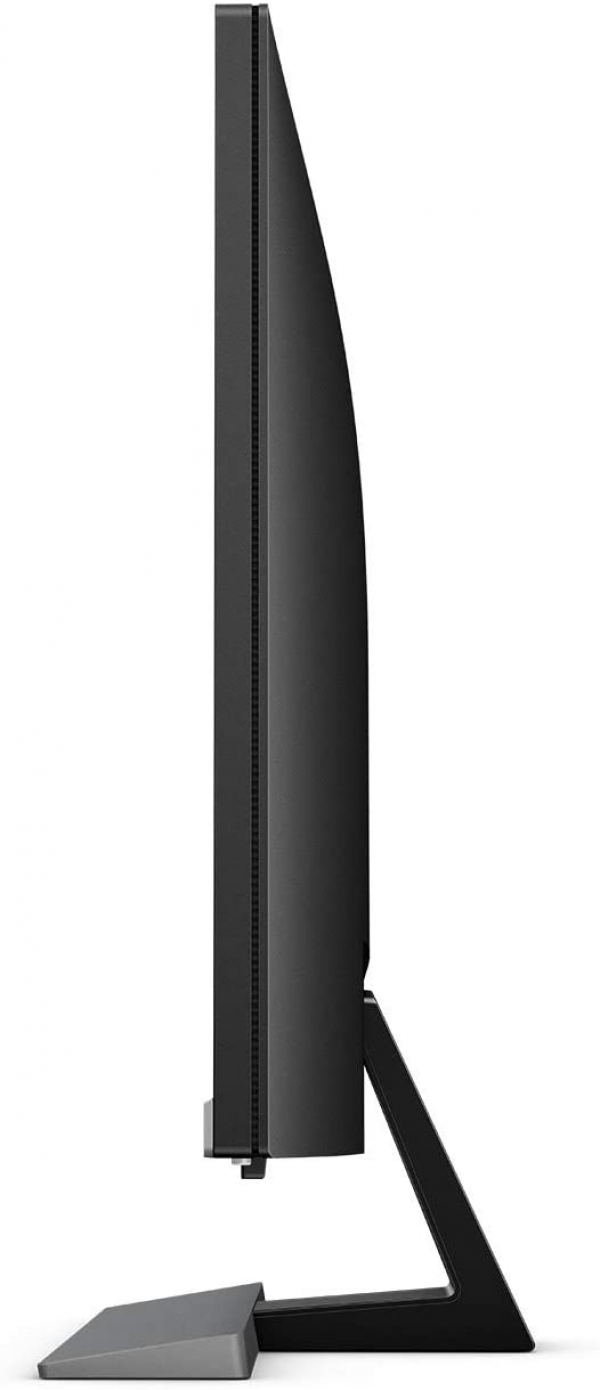
Reactivity
This monitor does not use Pulse Width Modulation (PWM) to vary the light intensity. It is therefore devoid of flicker (Flicker-Free), a phenomenon which can cause headaches in the most sensitive people. The screen also has a software blue light filter that reduces the color temperature for a warmer rendering. As said before, it also has a brightness sensor that automatically adjusts the backlight and the color temperature according to the ambient lighting. It also helps reduce eye strain.
The BenQ EW3270U also manages the FreeSync between 40 and 60 Hz and therefore works optimally when the graphics card sends between 40 and 60 images per second. It is a fairly small range, but suitable for the greedy definition of the screen (Ultra HD) which already requires a high-performance graphics card (AMD Radeon RX 5700 XT or Nvidia GeForce RTX2070 Super). In this operating range, fluidity is at the rendezvous and the image does not suffer from tearing problems or jerks (micro-stuttering). Recall that the FreeSync / AdaptiveSync now works with Nvidia graphics cards.
We measured the remanence time at 11 ms with the overdrive called AMA (Advanced Motion Accelerator) set to "high". This setting limits ghosting (drag effect behind the image) while avoiding the reverse ghosting effect (negative drag) that appears with the "Premium" setting. This responsiveness does not make it the best companion for very responsive video games like FPS or competitive games, but for other games, this does not pose many problems. Finally, we measured the delay in the display (input lag) at 12.9 ms (at 60 Hz). There is therefore no lag between the action with the mouse and its repercussion on the screen.

Conclusion
The BenQ EW3270U has a lot of arguments to put forward, such as more than adequate image quality, high native contrast thanks to deep blacks, FreeSync and HDR10 compatibility or its ambient light sensor. However, the final picture is marred by a few frustrating absences, such as the lack of a height adjustment, the anemic USB-C port or even the limited brightness peak for the HDR10. He's still a very good monitor, but he could have been so much better with a few minor tweaks.
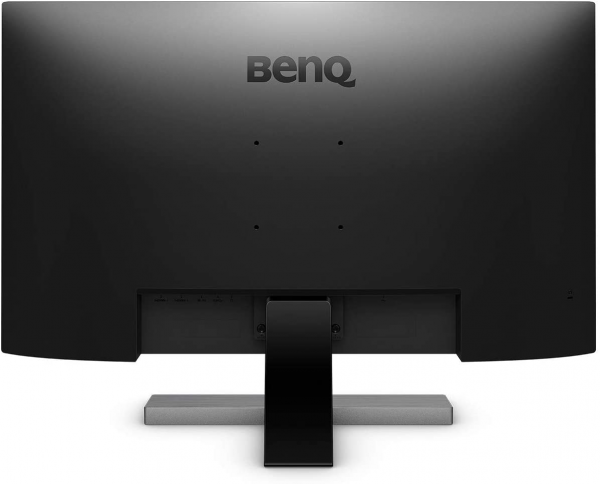
Specifications

